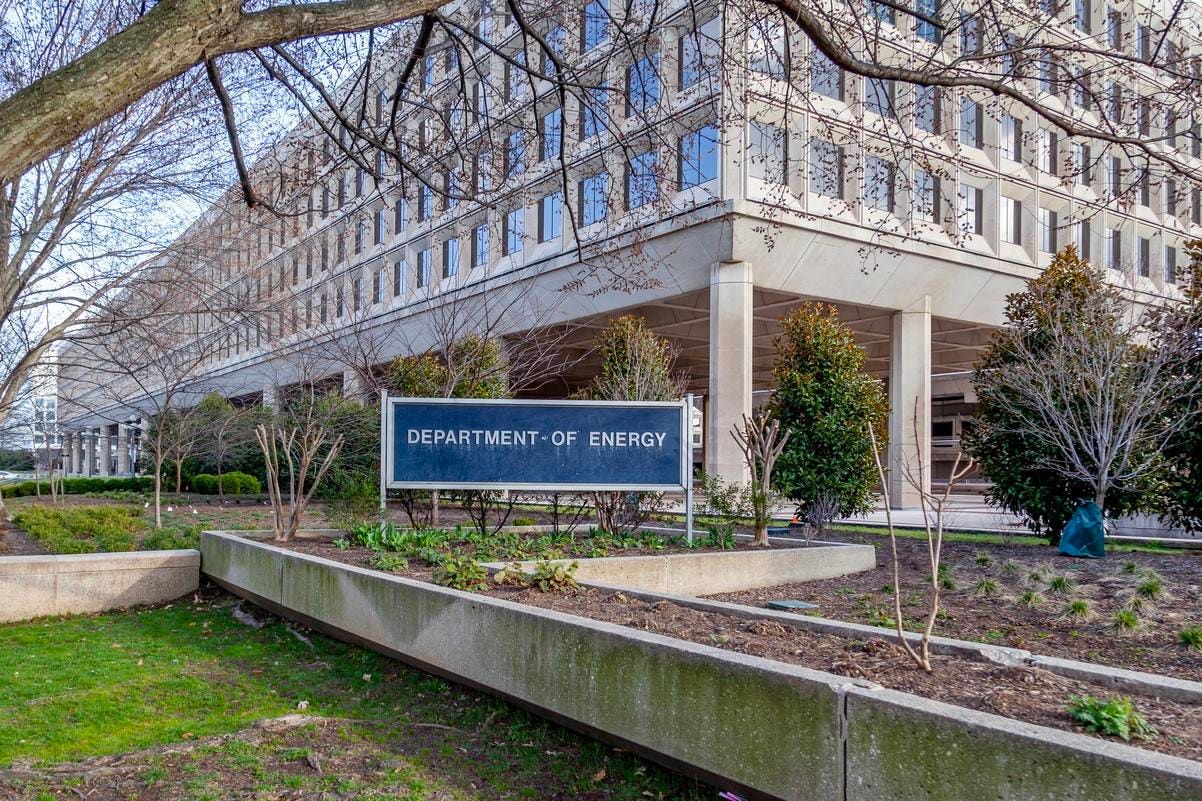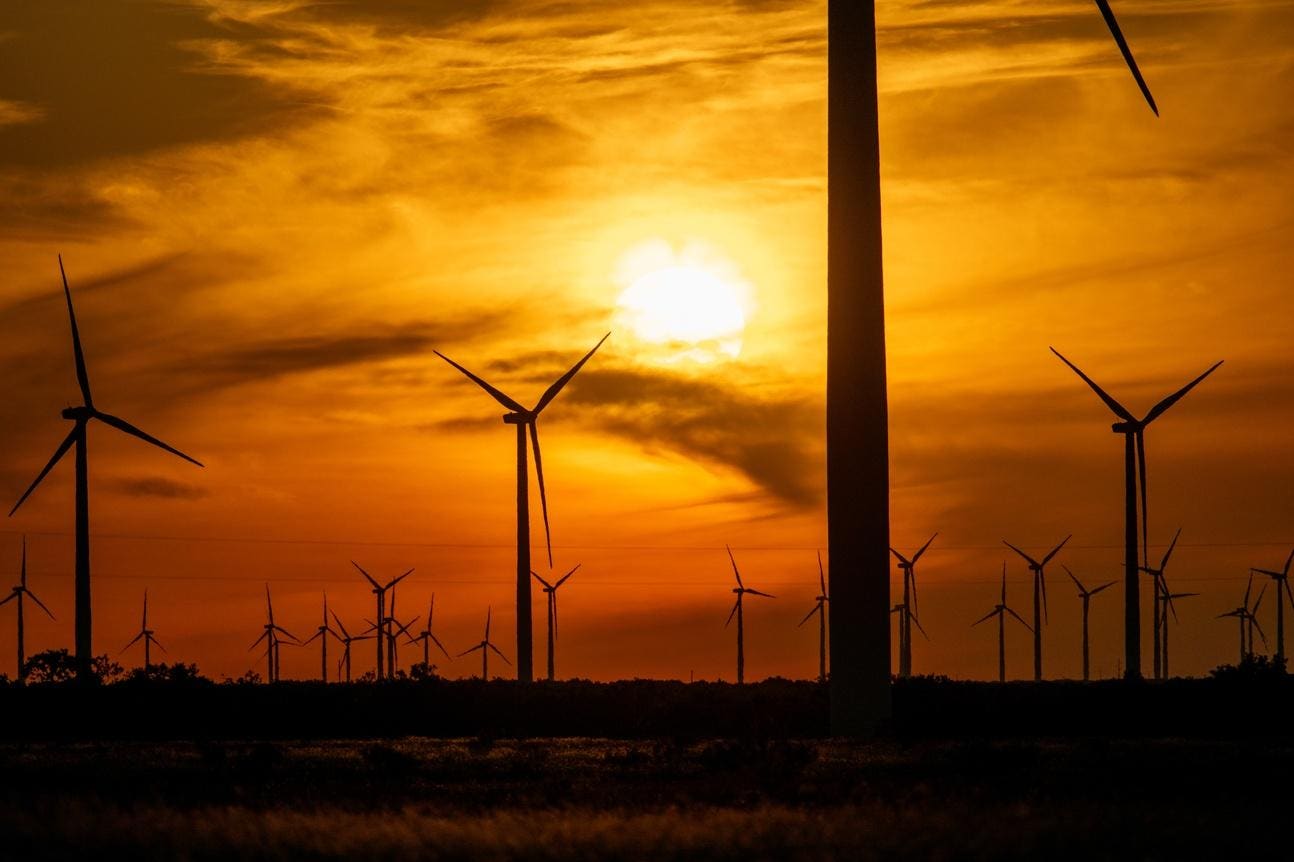U.S. Department of Energy headquarters in Washington, D.C.
Three experimental energy storage projects to keep power going during emergencies and power outages were awarded nearly $15 million from the U.S. Department of Energy.
“Maintaining critical infrastructure will ensure the nation’s electricity grid remains reliable, resilient and secure as we navigate different emerging threats,” Gil Bindewald, principal deputy assistant electricity secretary, said in a June 25 announcement. “This $15 million investment deepens our commitment to modernizing the nation’s electric grid through innovative energy storage technology solutions.”
A pair of $5 million grants went to Binghamton University of New York and Long Hill Energy Partners of Cupertino, Calif.
Binghamton University will lead a partnership to develop and show how a new technology for a grid-scale battery energy storage system (using bio-mineralized lithium mixed-metal phosphate) can improve energy resilience in the village of Endicott, N.Y. at a critical services facility.
Long Hill Energy Partners and its project team were awarded federal funds to demonstrate the feasibility of a quinone flow battery as a power source at the High Desert Regional Health Center in the Antelope Valley area of northern Los Angeles County.
Receiving a slightly lower grant of $4.1 million from DOE was Inlyte Energy Inc. of San Leandro, Calif. The federal funds will be used to develop and prove how an iron and sodium long-duration energy storage system can provide power to the Alliance Redwoods, located 6250 Bohemian Highway in Occidental, Calif. The site is in an area at high risk for wildfires.
These three projects were selected to showcase how energy storage technologies can benefit critical infrastructure during emergencies or power outages.
“The selected projects will help advance innovative storage technologies from early-stage research and development to widespread commercialization,” DOE stated. “Energy resiliency is crucial to support the nation’s electricity grid through extreme weather events, cyber or physical attacks, aging infrastructure, and electromagnetic events with the potential to cause widespread power outages.”
The grants are from the DOE’s Office of Electricity and awarded through the Critical Facility Energy Resilience. The Office of Electricity has an energy storage division focusing investments in innovative storage technologies from early research and development to commercialization. Projects must increase resiliency and be cost effective, safe and reliable.
Each grant is for a project with a performance period lasting no longer than 36 months from the date of the DOE award to the time of demonstration.
The funding notice underscored the need for U.S. facilities to provide critical societal and economic services during infrequent high-impact events that may cause electricity grid outages.
“Traditional back up power solutions such as diesel generators may have drawbacks such as required onsite fuel storage, potential for interruption of fuel delivery, extensive maintenance, harmful emissions and limited value proposition during non-emergency events,” DOE stated, adding that it plays a key role in maintaining a secure, resilient and reliable national energy delivery system using R&D.









